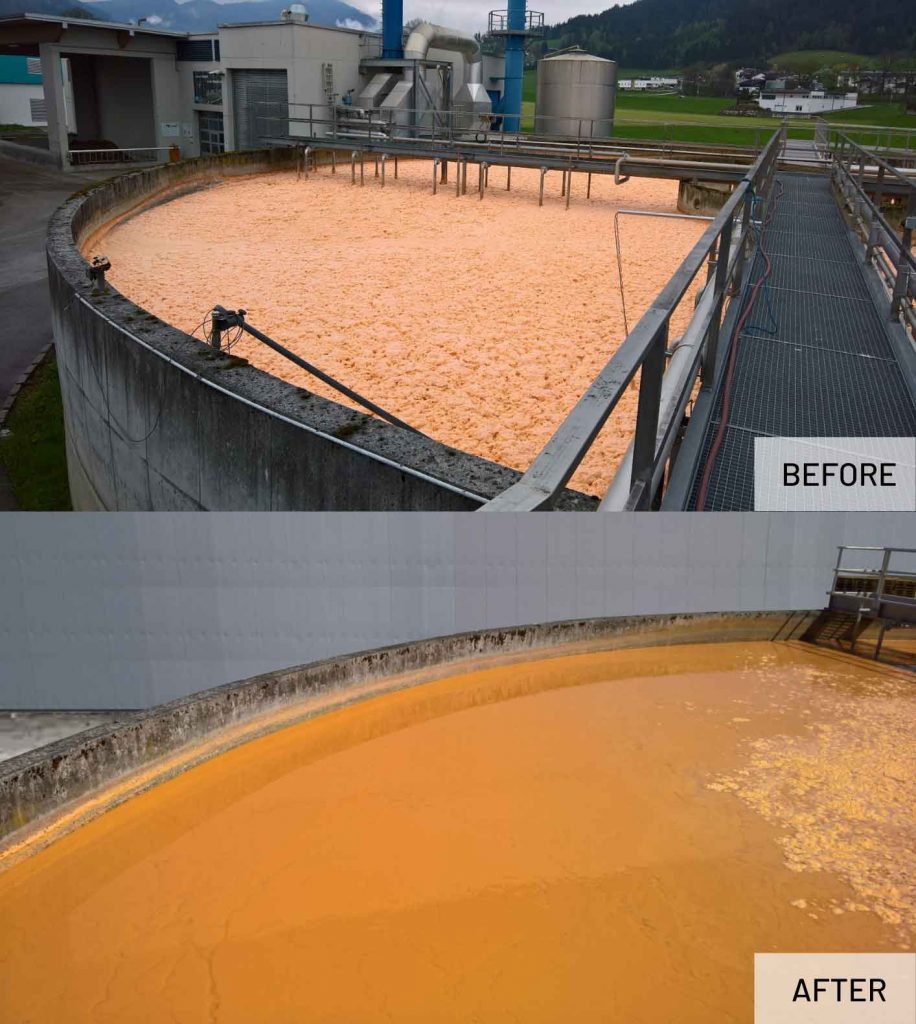There are few activated sludge wastewater treatment plants – both municipal and industrial – that haven’t, at some time, suffered from the phenomenon of sludge bulking. This is when sludge refuses to settle and forms a layer of dense brown foam on the surface of the aeration tank and final settling tank. The result of this floating sludge is carry-over of suspended solids giving poor quality treated water and odour problems. It is caused by the growth of filamentous bacteria like Beggiatoa, Nocardia and Microthrix. In small numbers these bacteria help flocculation, acting like polyelectrolytes to produce larger, stronger flocs. But, when they become too populous, the density of the flocs is reduced and they begin to float. This happens when nutrient ratios (N:P:K) go wrong, dissolved oxygen concentration falls, pH is lowered or fat, oil and grease (FOG) levels are high. The usual remedy is adding chemicals – nutrients, polyelectrolytes and selected bacteria supplements. But there’s another way.
Advanced Oxidation Technology
Filamentous bacteria are particularly susceptible to reactive oxygen species like peroxide, ozone and free hydroxyl radicals. Our te-ionTM advanced oxidation process has been used successfully to destroy filamentous bacteria selectively without the use of chemicals.

The te-ionTM technology works by passing atmospheric air through an electrical glow discharge, generating a non-thermal plasma to produce a range of reactive oxygen species. The plasma containing the reactive oxygen species is introduced into the wastewater either by a submerged turbine or via a diffuser system. The active oxygen destroys the filamentous bacteria and dramatically reduces sludge bulking without affecting the biological treatment process.